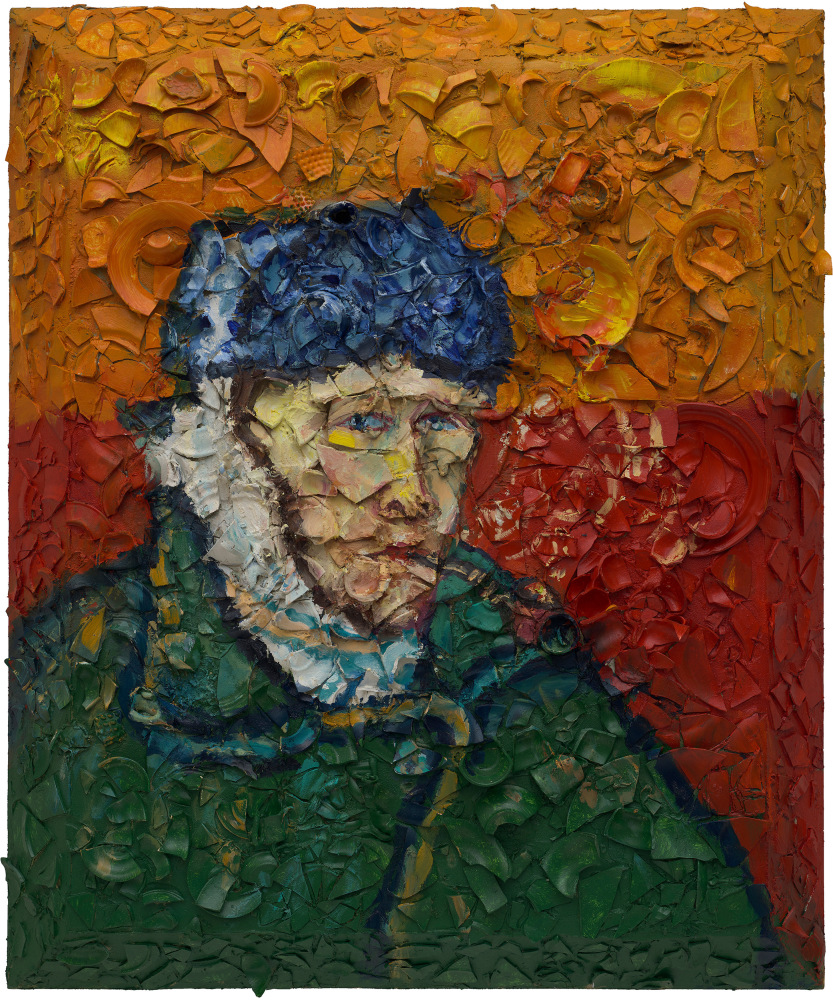
Julian Schnabel
Number 1 (Van Gogh, Self Portrait with Bandaged Ear, Vincent), 2019
Oil, plates, and bondo on wood
72 x 60 inches (182.9 x 152.4 cm)
© Julian Schnabel Studio
In a new exhibition, the artist returns to the subject of his latest movie and explores the connections between two seemingly separate parts of his career.
Painting and filmmaking are related mediums, but there is a relatively small canon of good films about painters. These are, by my own, probably highly debatable, count: Kenji Mizoguchi’s Utamaro and His Five Women (1946), Vincente Minnelli’s Lust for Life (1956), John Huston’s Moulin Rouge (1952), Andrei Tarkovsky’s Andrei Rublev (1969), Peter Greenaway’s The Draughtsman’s Contract (1982), Jacque Rivette’s La Belle Noiseuse (1990), Ed Harris’s Pollock (2000), Julie Taymor’s Frida (2002), Mike Leigh’s Mr. Turner (2014), Florian Henckel von Donnersmarck’s Never Look Away (2018) — and two movies by Julian Schnabel, who is the only director on the list who can also claim to have made a pretty decent living as a painter. His first film, 1996’s Basquiat, is about his former contemporary Jean-Michel Basquiat, and is part biopic (the title character is played by the great Jeffrey Wright), part artistic treatise and almost as much about Schnabel, who actually painted the imitations of Basquiat works that appear in the film himself (he refers to them now as “props”) and shot various scenes inside his own New York City home. His second and superior film about a painter, 2018’s At Eternity’s Gate, is an existential portrait of Vincent van Gogh — played by Willem Dafoe — that illustrates the contrast between his pained final days and his outsize influence.